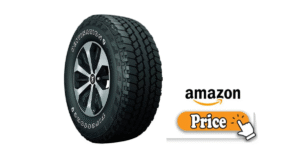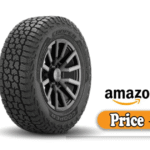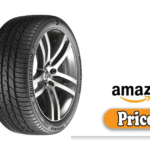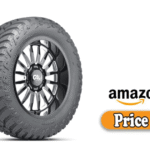If you’re like me, choosing the right set of tires for your vehicle can feel overwhelming. There are countless brands, models, and performance claims floating around, and every driver seems to have a different opinion.
I’ve spent years experimenting with different tires on different vehicles, and among all those brands, Firestone Tires have always stood out. This article isn’t just another generic review filled with specs and jargon. It’s my honest experience, a real-world look at how Firestone tires perform in terms of design, comfort, performance, reliability, and build quality.
I’ll share what I genuinely like, what could be better, and whether they’re worth your hard-earned money. Whether you drive a sedan, SUV, truck, or performance car, I’ll walk you through everything you need to know before investing in a set of Firestone tires.
What I Like
Let’s start with the good stuff, the reasons why Firestone tires continue to earn a solid reputation among everyday drivers and enthusiasts alike.
1. Reliable Traction and Grip
One of the first things I noticed when switching to Firestone tires was their consistent grip on various surfaces. Whether it’s wet pavement, light snow, or dry asphalt, the tires hold the road confidently. Firestone’s use of advanced tread compounds and multi-directional siping patterns enhances traction, even during sharp turns or quick braking.
The Firestone WeatherGrip and Destination LE3 models, in particular, excel in wet-weather handling. Hydroplaning resistance is strong; you can feel the tread channels working to push water away.
2. Comfort and Noise Reduction
If you value a quiet and smooth ride, Firestone delivers. Compared to budget brands, Firestone tires significantly reduce cabin noise. The ride quality feels refined, with less vibration even on rough roads. On long highway trips, this makes a huge difference.
3. Durability and Longevity
Firestone tires are known for their strong tread life. Many drivers, including myself, have logged 50,000 to 70,000 miles before seeing major wear. The company backs this up with impressive treadwear warranties, some up to 70,000 miles, depending on the model.
That long lifespan makes Firestone an excellent investment over time, balancing price and performance.
4. All-Season Versatility
Firestone’s all-season tires perform admirably across different weather conditions. While not a substitute for dedicated winter tires in extreme snow, the WeatherGrip line handles cold climates and wet conditions effectively. You won’t need to swap tires every season unless you live in extreme winter zones.
5. Great Value for Money
When you compare Firestone to premium brands like Michelin or Continental, the cost difference is noticeable, but the performance gap isn’t huge. Firestone offers premium-level performance at a mid-range price, which makes it one of the best value-for-money options on the market.
What Could Be Better
No product is perfect, and Firestone tires are no exception. While I’m generally impressed, there are a few areas where the brand could improve.
1. Snow and Ice Performance
While Firestone’s all-season models do reasonably well in light snow, they struggle on icy roads or deep snow. The tread pattern and rubber compound, while designed for versatility, aren’t as aggressive as dedicated winter tires. If you live in northern climates with long winters, consider pairing your Firestones with a set of winter-specific tires.
2. High-Performance Cornering
For sports car enthusiasts, Firestone’s performance tires, like the Firehawk Indy 500, are good, but not exceptional compared to ultra-premium performance options like Michelin Pilot Sport 4S. You’ll feel some softness during hard cornering at high speeds.
3. Tread Wear Variability
Although Firestone tires are durable, tread wear can vary depending on vehicle alignment, tire pressure, and driving habits. I noticed that the front tires on my SUV wore slightly faster than the rear ones, even with regular rotation. This isn’t uncommon, but it’s worth noting.
4. Road Feedback
While Firestone tires are smooth and comfortable, they can sometimes mute road feedback, especially on luxury sedans or crossovers. For drivers who love feeling every nuance of the road, that can be a downside. 👉🏿👉🏻 Check The Latest Price and Offer at Amazon 👈🏻👈🏿
👉🏿👉🏻 Check The Latest Price and Offer at Amazon 👈🏻👈🏿
My Personal Experience
Over the past decade, I’ve owned multiple vehicles: a compact sedan, a family SUV, and a midsize pickup truck. Each of these vehicles, at some point, wore Firestone tires.
My first set was the Firestone Destination LE2 on a 2015 Toyota RAV4. I was commuting 60 miles daily, often through heavy rain and occasional snow. Those tires felt planted, even at highway speeds, and after 50,000 miles, they still had plenty of tread left.
Later, I switched to the Firehawk Indy 500 for my sporty Honda Civic Si. They transformed the driving experience into excellent dry grip, confident cornering, and a smooth ride. While not the quietest tire, they delivered excitement and responsiveness that made every drive fun.
Finally, for my truck, I tested the Destination A/T2 tires. These all-terrain tires balanced on-road comfort with off-road toughness. I’ve driven them through mud, gravel, and rainstorms, and they’ve handled everything I threw at them. The sidewalls are strong, the tread wears evenly, and the traction is reliable.
Across all these experiences, Firestone tires consistently performed above expectations for their price bracket.
Design
Firestone’s design philosophy blends functionality with durability. Each tire is engineered with specific use cases in mind, whether it’s all-season commuting, sporty performance, or rugged off-road capability.
1. Tread Pattern
The tread design is one of Firestone’s strongest features. The asymmetric and symmetric tread layouts provide excellent water evacuation and even wear. The deeper grooves and sipes improve traction while maintaining a comfortable ride.
2. Sidewall Construction
Firestone pays close attention to sidewall stiffness, especially in their all-terrain models. Reinforced sidewalls prevent punctures and enhance stability under load, a l for SUVs and trucks.
3. Aesthetic Appeal
Let’sbethonestt most drivers don’t buy tires for looks. But Firestone tires do have a clean, rugged aesthetic, with bold sidewall lettering and crisp tread designs that complement the look of any vehicle.
4. Eco-Friendly Materials
Firestone has made strides toward sustainable manufacturing, incorporating eco-conscious compounds and production methods. Their new models are less petroleum-based material without sacrificing performance.
Performance
Performance is where Firestone’s innovation really shines. Here’s how the tires stack up across key performance categories.
1. Dry Road Handling
Firestone tires perform exceptionally well on dry pavement. Braking distances are short, steering is responsive, and grip is confident. On winding roads, they maintain traction without slipping or squealing.
2. Wet and Rainy Conditions
Rain is often where cheaper tires fail, but Firestone’s tread patterns effectively channel water away. I’ve driven through torrential downpours at highway speeds, and the tires never once hydroplaned.
3. Off-Road Capability
With their Destination A/T2 and Transforce AT2 models, Firestone offers strong off-road capability for adventurers and truck owners. The traction on gravel, dirt, and muddy trails is dependable. They’re not extreme off-road tires, but for light to moderate trails, they’re perfect.
4. Braking and Control
Firestone’s rubber compound enhances braking power. During sudden stops, I felt minimal skidding, and the tires maintained directional stability. That sense of control adds peace of mind.
5. Ride Comfort
One of Firestone’s biggest strengths is comfort. Long drives feel less fatiguing because of reduced vibration and optimized tread contact. Even after several thousand miles, the comfort level remains consistent.
Build Quality
Firestone’s build quality has come a long way since its early days. The company, a subsidiary of Bridgestone, combines Japanese precision with American engineering heritage.
1. Materials and Craftsmanship
Each tire undergoes rigorous quality control. The rubber compounds are formulated to resist cracking, heat, and uneven wear. The sidewalls are reinforced for strength without making the tire excessively heavy.
2. Warranty and Trust
Firestone’s warranty programs are among the best in the mid-tier segment. You get mileage warranties ranging from 50,000 to 70,000 miles, and most retailers honor them without hassle.
3. Real-World Durability
Even after years of use, I’ve never had a blowout or premature tread separation with Firestone tires. That reliability speaks volumes about their manufacturing consistency.
Alternative Option
If you’re considering alternatives to Firestone, here are a few that stand out:
| Brand | Comparable Model | Pros | Cons |
| Michelin | Defender T+H | Outstanding comfort and longevity | Expensive |
| Goodyear | Assurance WeatherReady | Excellent wet traction | Slightly louder ride |
| Continental | TrueContact Tour | Great balance of comfort and handling | Pricier |
| Bridgestone | Turanza QuietTrack | Ultra-smooth ride, quiet | Higher cost |
| Cooper Tires | CS5 Ultra Touring | Budget-friendly, decent performance | Less refined at high speeds |
Firestone sits comfortably in the middle strong performance, dependable durability, and fair pricing.
Final Thought
After years of driving with Firestone tires across different vehicles and conditions, my verdict is clear:
Firestone offers some of the most well-balanced, reliable, and value-packed tires on the market today.
If you want performance without breaking the bank, comfort without compromise, and durability backed by a trusted brand, Firestone delivers.
They might not be the absolute best for extreme sports driving or deep snow, but for the average driver, they’re a smart, dependable choice. The combination of safety, longevity, and affordability makes Firestone a brand worth trusting.
Read More: Michelin Tires Price | My Honest Review
FAQs: Firestone Tires Reviews | My Honest Experience
- Are Firestone tires of good quality?
Yes. Firestone tires are known for solid construction, reliable grip, and long tread life. They’re built by Bridgestone, one of the world’s most respected tire manufacturers. - How long do Firestone tires last?
Depending on the model, you can expect anywhere from 50,000 to 70,000 miles of use, provided you maintain proper tire pressure and rotation. - Are Firestone tires quiet?
Most Firestone models, especially the Destination and WeatherGrip series, are designed to minimize road noise for a smoother, quieter ride. - Do Firestone tires perform well in the rain?
Yes, very well. Their tread patterns are designed to channel water effectively and reduce hydroplaning risk. - Are Firestone tires made in the USA?
Many Firestone tires are manufactured in the United States, though some production also occurs in other Bridgestone-owned facilities worldwide. - Which Firestone tire is best for SUVs?
The Destination LE3 is an excellent all-season choice, offering great traction, comfort, and mileage for SUVs and crossovers. - Are Firestone tires good for winter?
All-season models like the WeatherGrip handle light snow well, but for heavy snow or ice, consider Firestone’s dedicated winter tires. - How do Firestone tires compare to Michelin or Goodyear?
Firestone offers similar everyday performance at a more affordable price, though Michelin typically wins in ride refinement and tread longevity. - Do Firestone tires come with a warranty?
Yes. Most models include a limited treadwear warranty (50,000–70,000 miles) and a 90-day satisfaction guarantee. - Are Firestone tires worth the money?
Absolutely. For the price, they deliver excellent value, dependable safety, and solid performance across various driving conditions.




